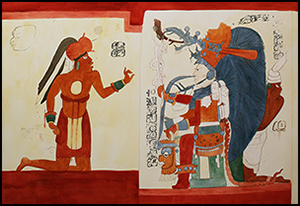Published online by Cambridge University Press: 30 January 2015

Maya murals depicting scenes of courtly life are well known from sites such as Bonampak; far less common are scenes depicting life outside the royal sphere. Recent excavations at Xultun in Guatemala have revealed well-preserved murals in a domestic context that offer a fresh perpective on life in the Maya court, that of the priests, scribes and artists who attended the royal governor. Here, the authors decode the images to reveal the lives and activities of those who planned, performed and recorded official events in Classic-period Xultun. One of only two well-preserved examples of eastern Maya lowland wall painting from the Late Classic period, this rare display of master craftsmanship outside of the royal court sheds new light on the lives of those who produced it.